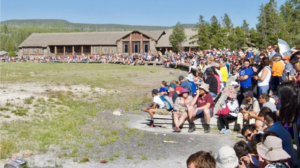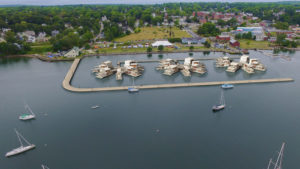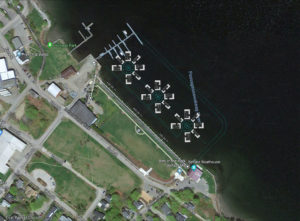The Call of the Wild
It’s no surprise that the global pandemic has changed our habits and behaviors. International travel restrictions and the slow return to large gatherings in public spaces, compounded with a need to escape after months of confinement, have inevitably led people to pursue alternative forms of leisure and recreation. For many, that outlet has been a call back to the wild.

The 2021 Outdoor Participation Trends Report reveals that last year, 53% of Americans ages 6 and over participated in outdoor recreation at least once, the highest participation rate on record. Remarkably, that’s more than 7.1 million more Americans participating in outdoor recreation than in the year prior.
This shift is reflected in consumer behavior as well. According to Pattern, a company in the ecommerce intelligence sector, consumer demand for camping and outdoor equipment was up 25% compared to the same period in 2020 and up 85% compared to 2019. In May of 2020, sales of tents alone jumped a whopping 97% over the previous year.
Sales of boats, marine products, and services across the country leaped to a 13-year high in 2020 at $47 billion in sales, an increase of 9% from the prior year. RV sales estimates for 2021 project a 19.5% increase over 2020 equating to approximately 507,200 units sold.
The list of statistics related to the growing popularity for outdoor activities goes on and on. So what may have begun as an option of last resort for many COVID-confined individuals, has translated into a major, and likely, long-term lifestyle shift.
Loved to Death
For every action, there is an equal and opposite reaction. One need look no further than the National Park System to see how growing popularity of outdoor activities has created new environmental pressures and stresses on popular destinations.
So far in 2021, Yellowstone has hosted over 4.4M visits, up 32% from the same period last year, and up 17% from 2019. That’s the population of the state of Oregon plus its 200,000 closest friends.

Yellowstone National Park – Image Courtesy of Nick Amoscato
Nearby, Grand Teton National Park had its busiest-ever June, with a 20% increase in visitors over 2020. Annual visits to Zion are up 18% and Rocky Mountain are up 25%. And it’s not just the national park headliners that are seeing the spikes. Smaller parks like Shendoah are witnessing 16% increases and mountain parks like Catoctin are seeing a 55% jump in annual visitors. In June alone, over 31 million people visited a National Park Service site.
The impact of this growing popularity has created some real challenges. At many National Parks, swelling crowds have led to hours-long waits at entrances, overcrowded trails and parking lots, piled up garbage and troubling environmental degradation. In fact, the problem has become so bad that congress is getting involved.
And while there is ongoing debate about whether the growing popularity of the outdoors will be good for conservation and environmental stewardship in the long-term, the swelling crowds at the more established outdoor destinations have left many industry experts in search of new ideas and innovations that can protect the environment while providing greater opportunity the public to get outdoors.
Striking a Balance
In the great race for sustainable outdoor use new ideas and innovations have come to the table. These include the practical such as establishing visitor reservation systems at national parks, which better distribute and manage the number of daily visitors. It also includes a greater emphasis on education and reeducating the public about the ethics of the outdoors and some guided hand holding through a learning curve period.
Long-term solutions also require new design and engineering innovations that allow greater numbers of people to access the outdoors, while mitigating impact. This is particularly important when it comes to overnights stays be it in resorts, camping, or glamping (glamerous camping).

Stephens Waring OASys floating designs can be installed along shorelines in environmentally sensitive areas mitigating shoreline development and ecosystem disturbance.
Priority needs include mitigating expansion and development in ecologically sensitive areas, establishing centralized self-sufficient utilities, sustainable building materials, non-permanent foundations, and building designs that integrate with nature rather than dominate it.

Stephens Waring OASys floating masterplans can be installed with permanent or temporary infrastructure that can be integrated with civic utilities or operate completely off grid.
With the lingering effects of the pandemic projected to continue for some time to come, the popularity of outdoor recreation will remain strong. Managing the relationship between the public and the outdoors is both a massive challenge and opportunity. If the problem is addressed properly, the lessons learned can transform not only our environmentally sensitive and remote landscapes, but these innovations can be applied to our urban communities and benefit us all.